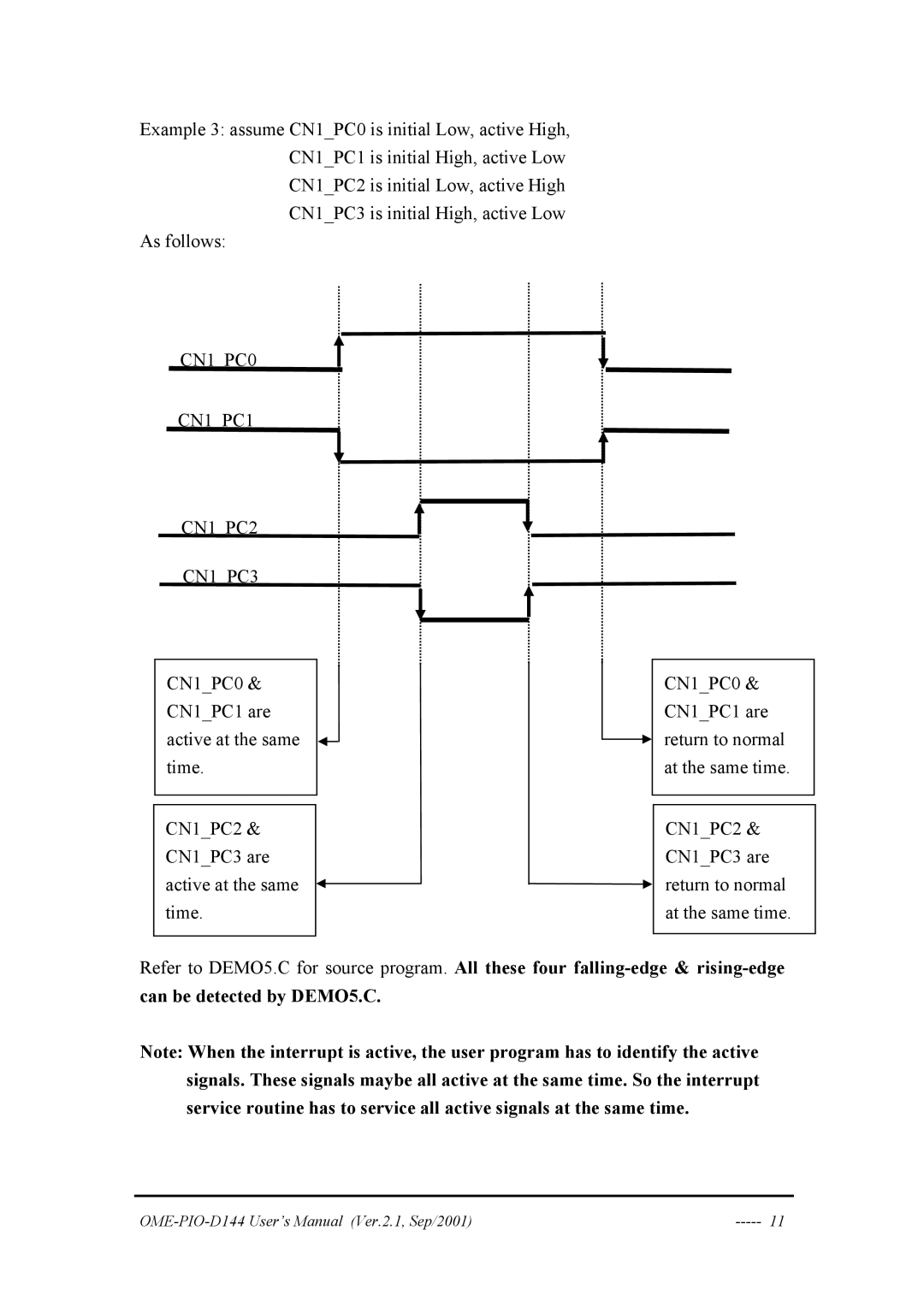
Example 3: assume CN1_PC0 is initial Low, active High, CN1_PC1 is initial High, active Low CN1_PC2 is initial Low, active High CN1_PC3 is initial High, active Low
As follows:
CN1_PC0
CN1_PC1
CN1_PC2
CN1_PC3
CN1_PC0 & CN1_PC1 are active at the same time.
CN1_PC2 & CN1_PC3 are active at the same time.
CN1_PC0 & CN1_PC1 are return to normal at the same time.
CN1_PC2 & CN1_PC3 are return to normal at the same time.
Refer to DEMO5.C for source program. All these four
Note: When the interrupt is active, the user program has to identify the active signals. These signals maybe all active at the same time. So the interrupt service routine has to service all active signals at the same time.
